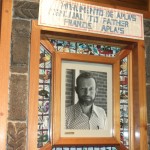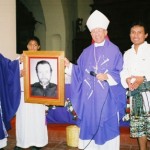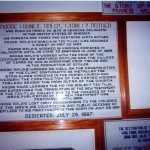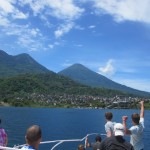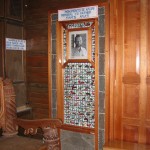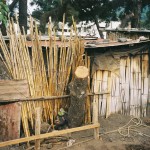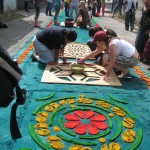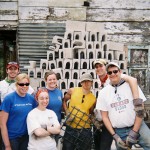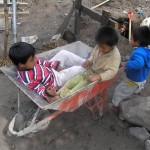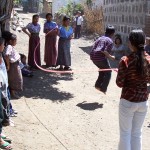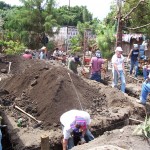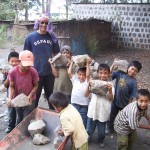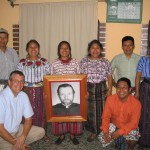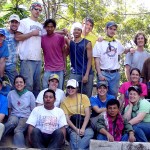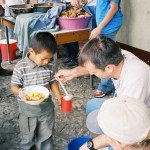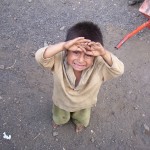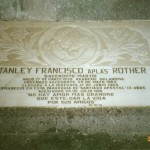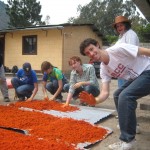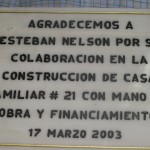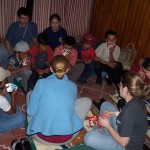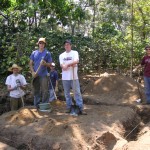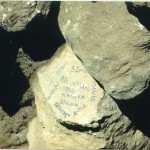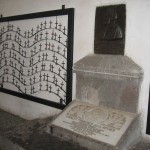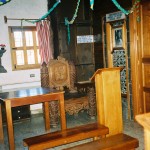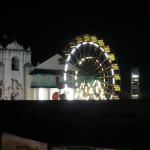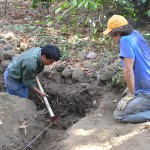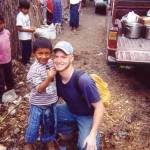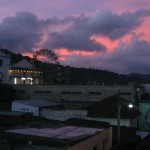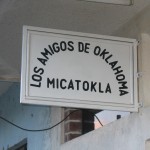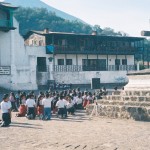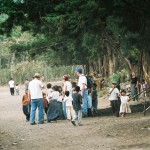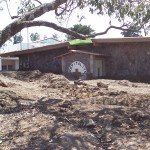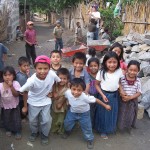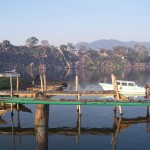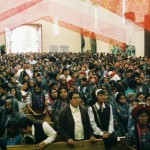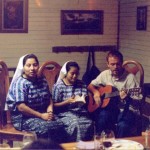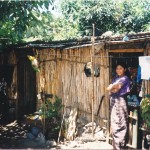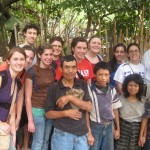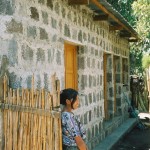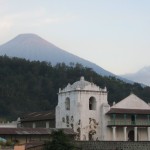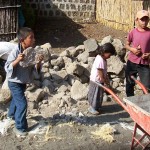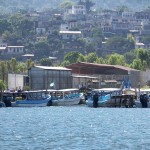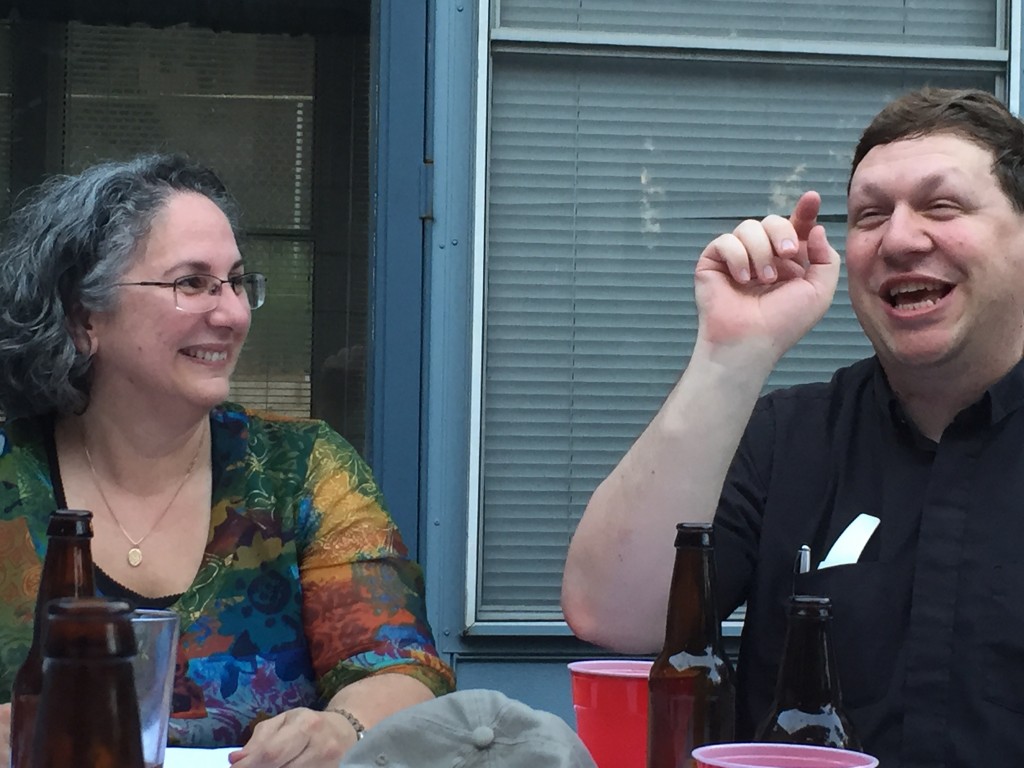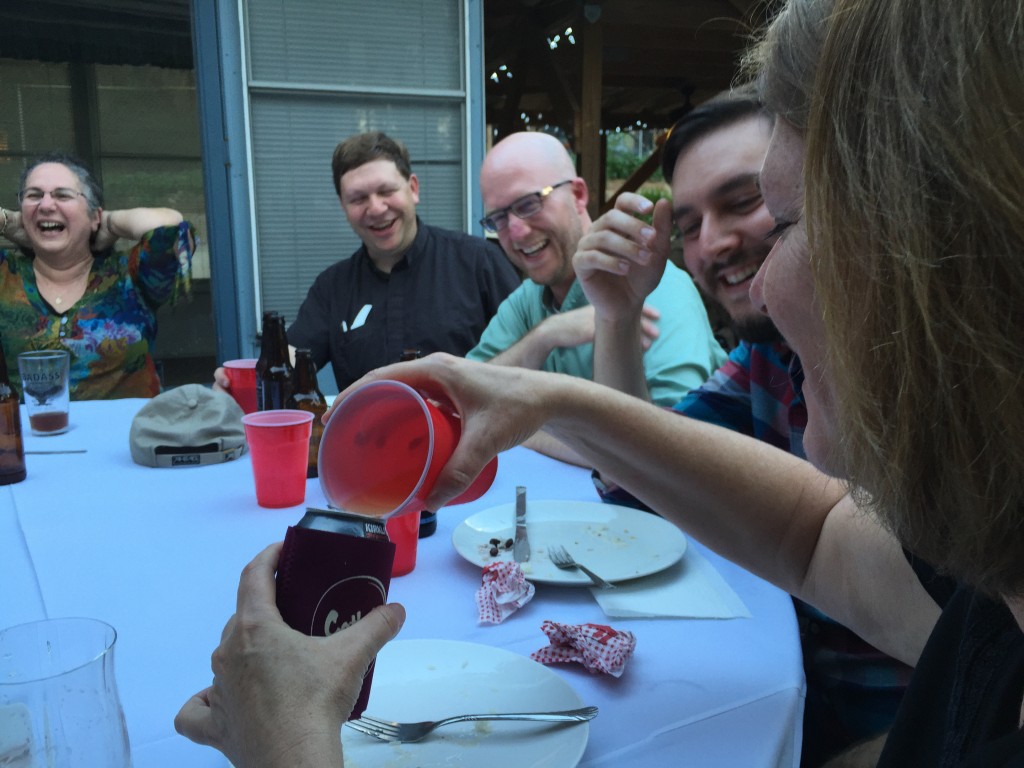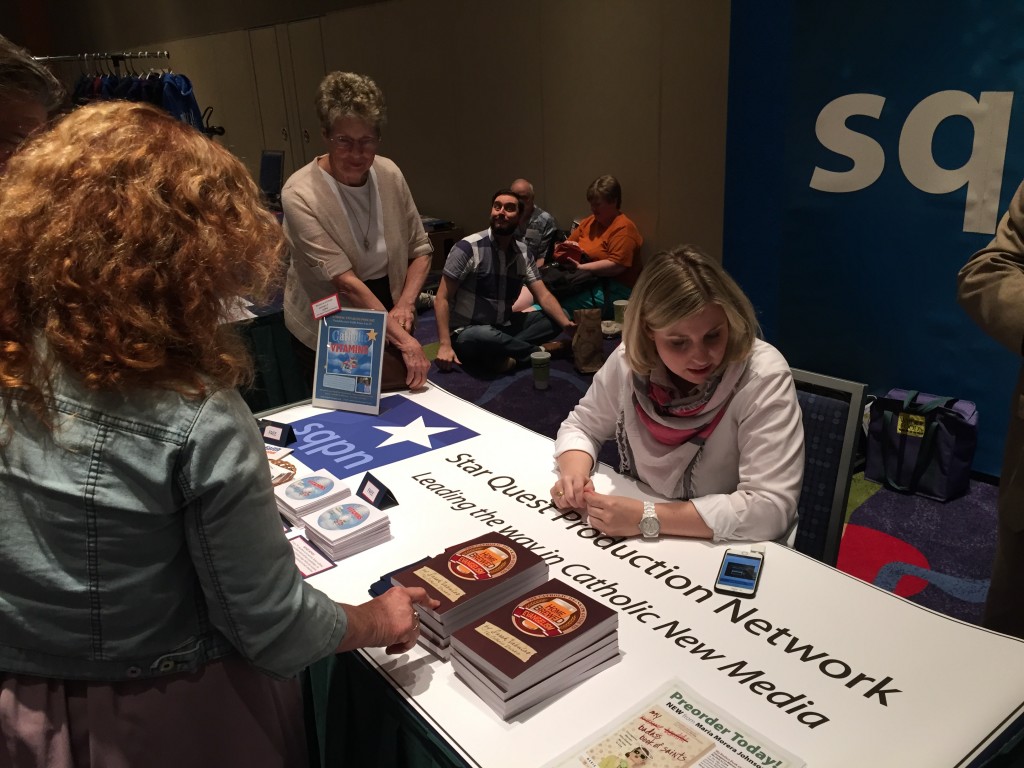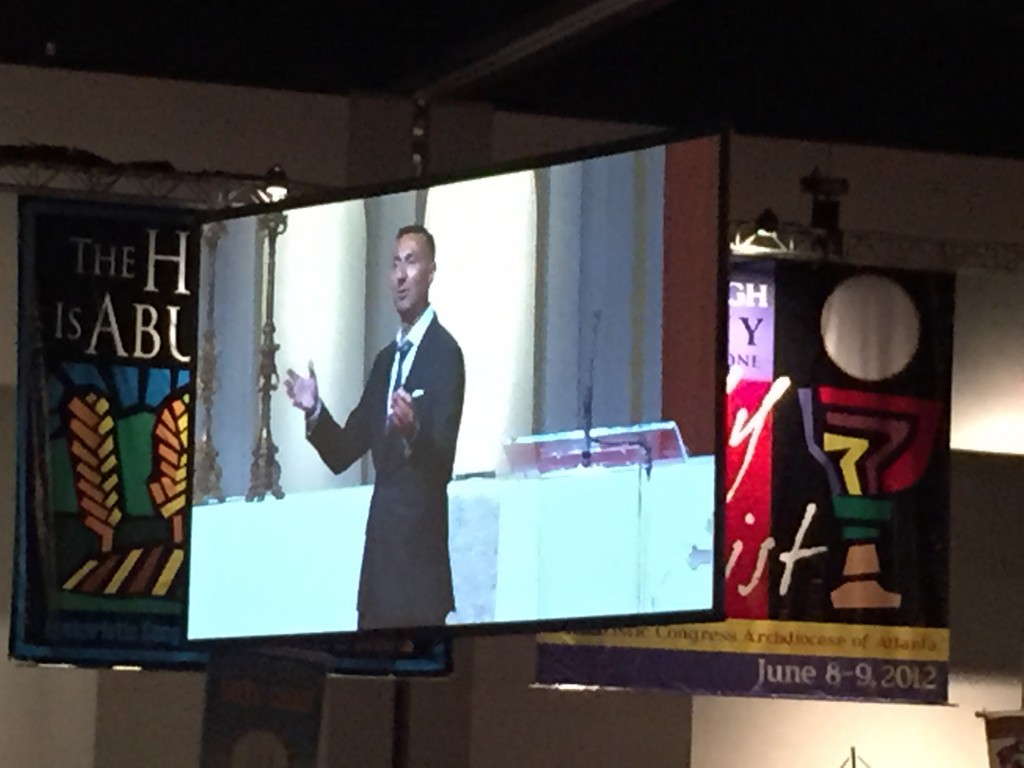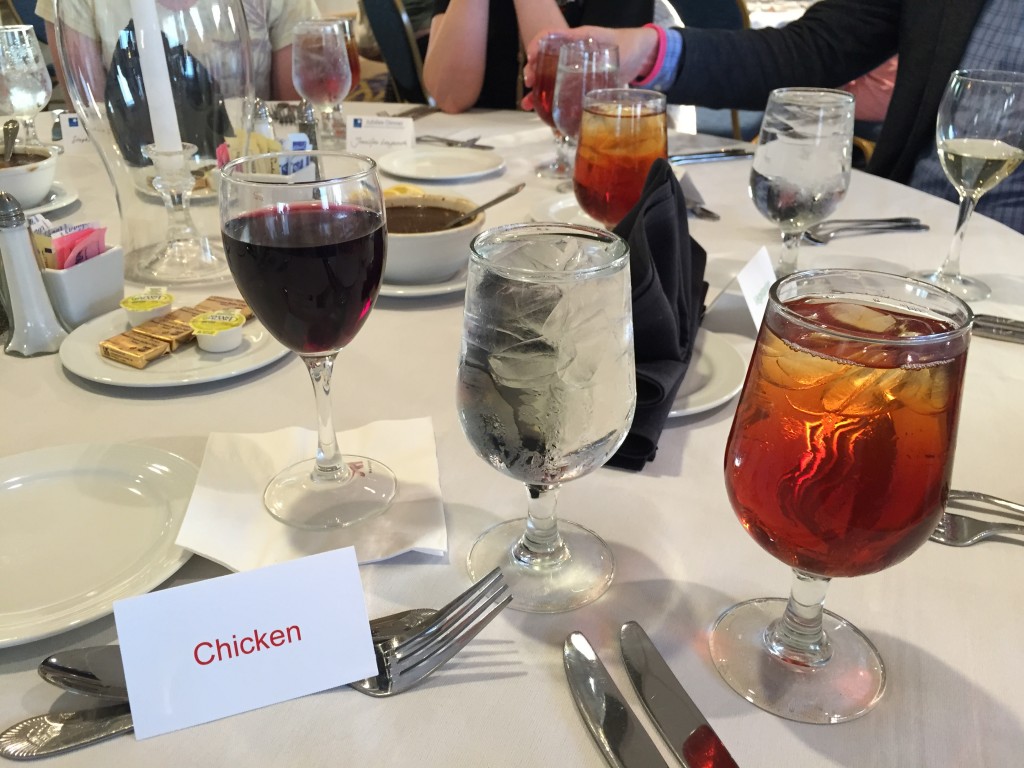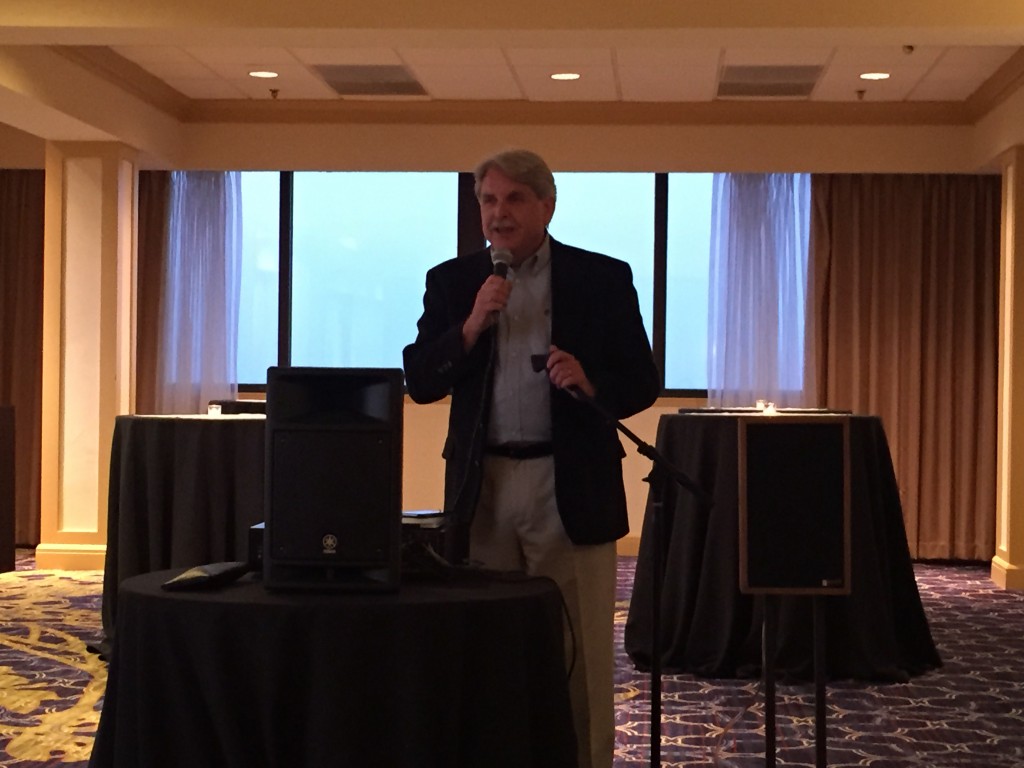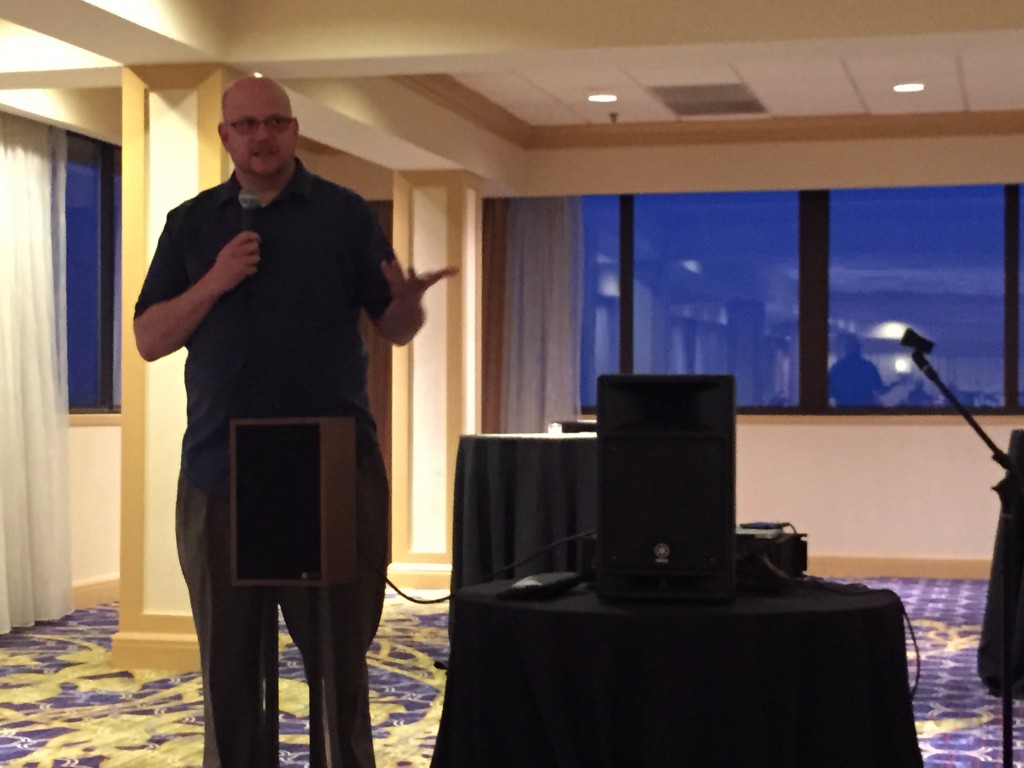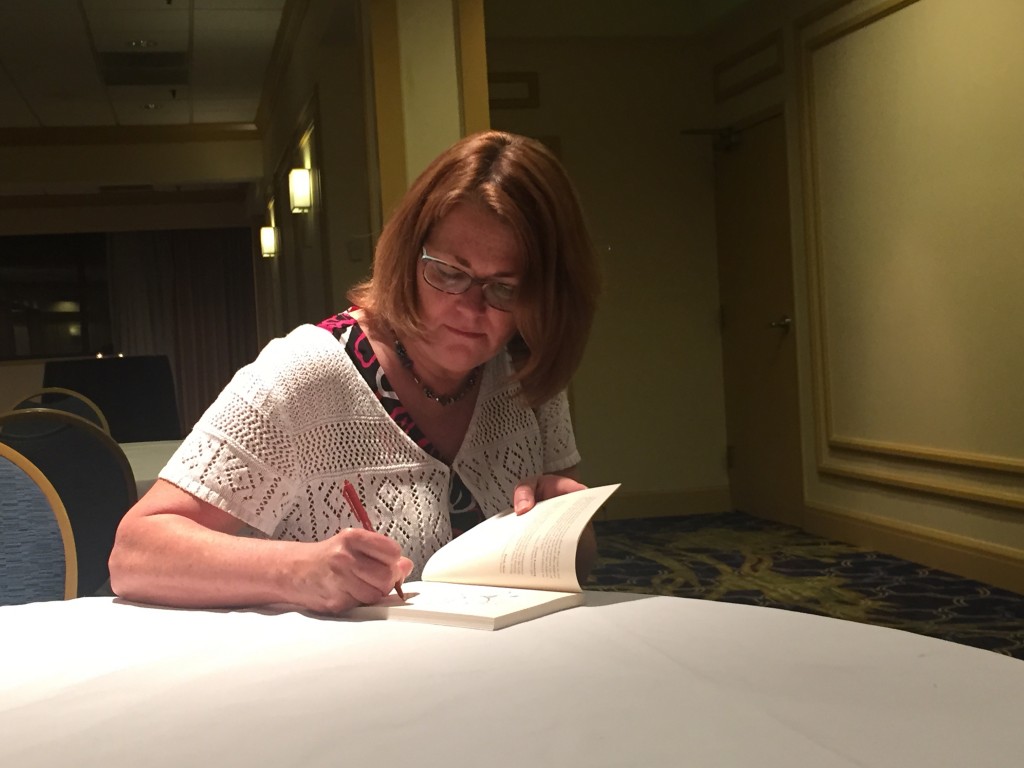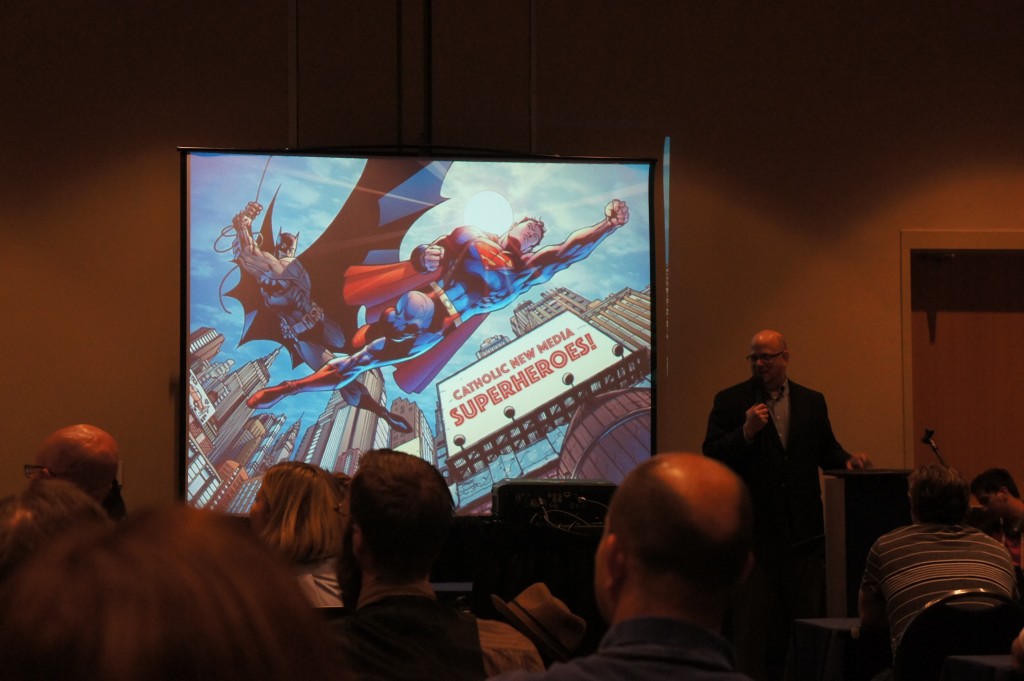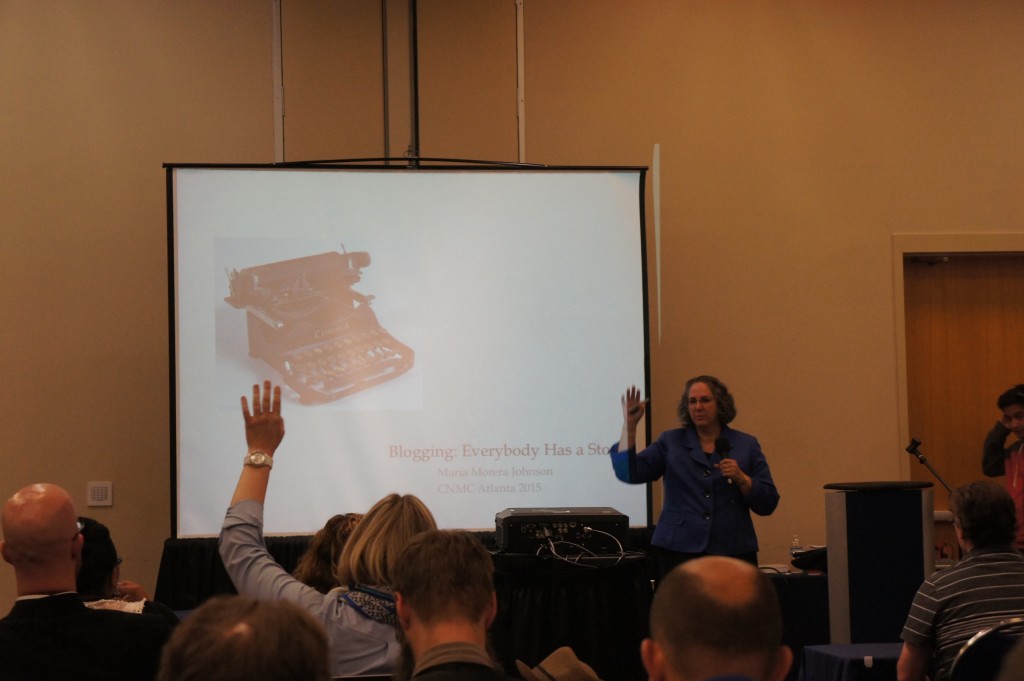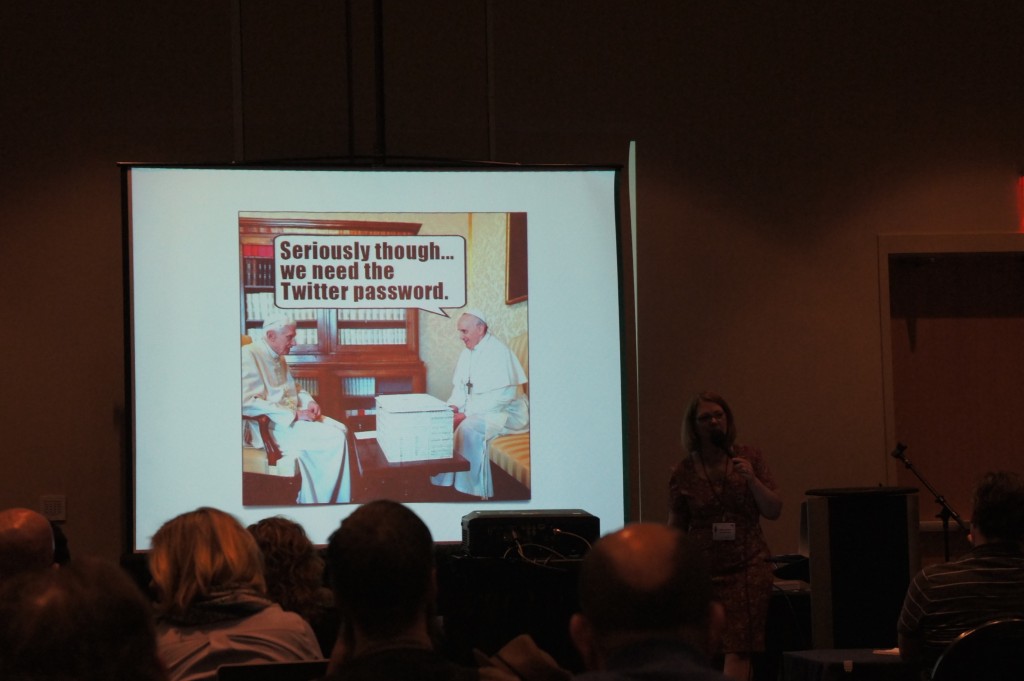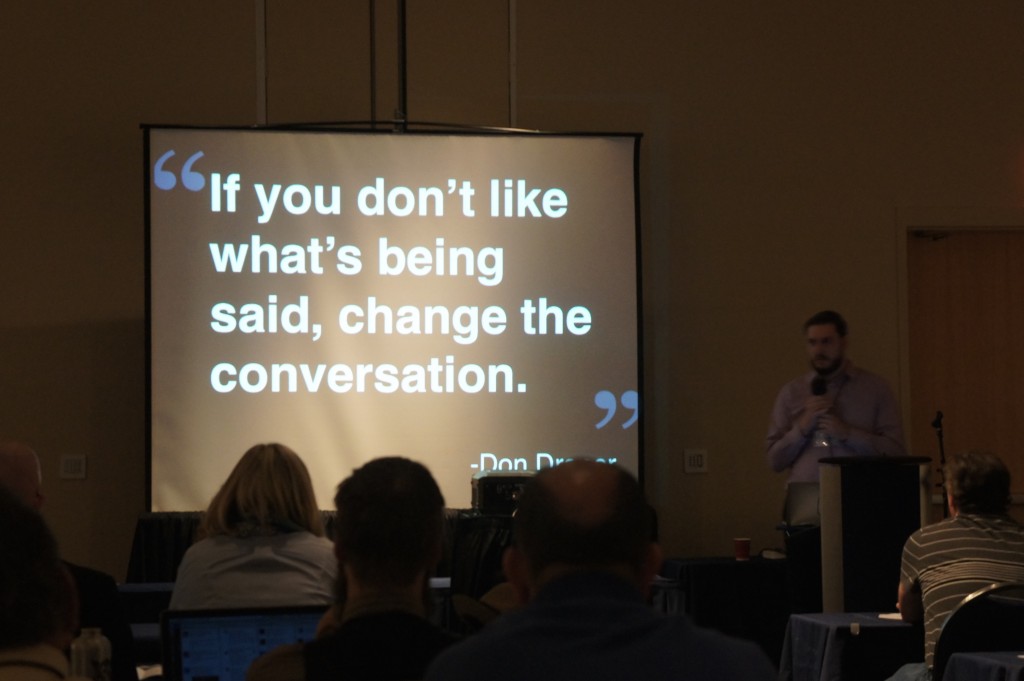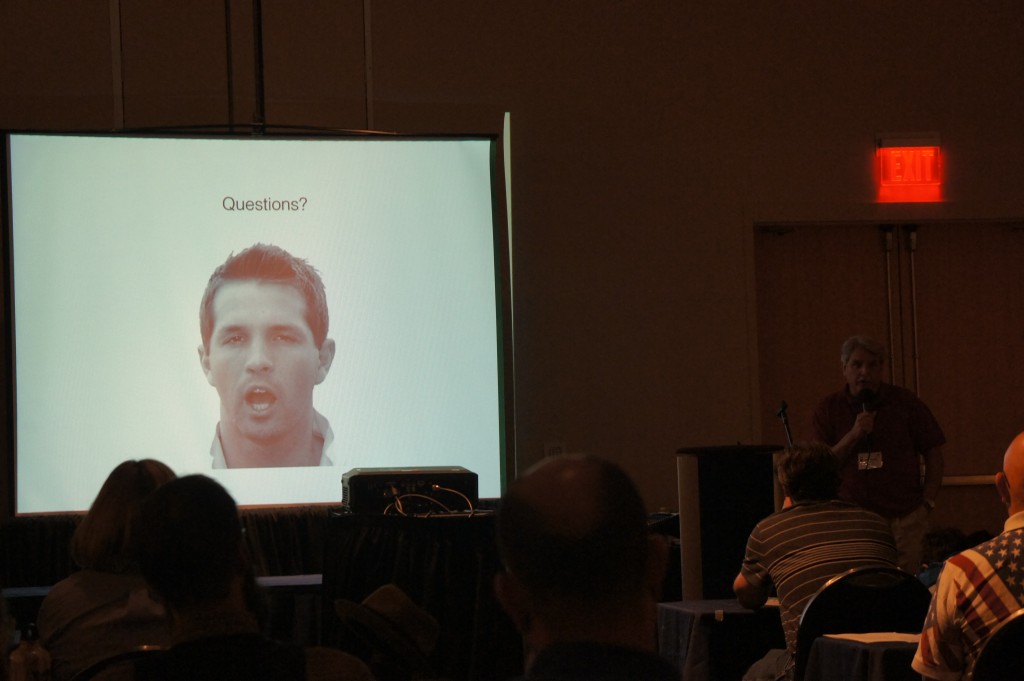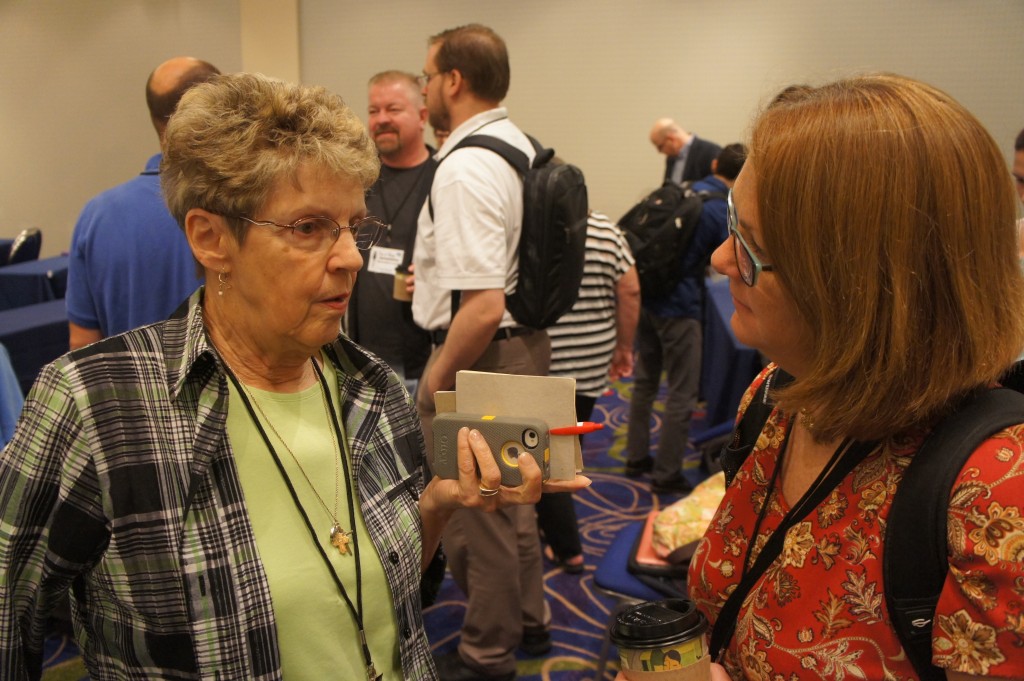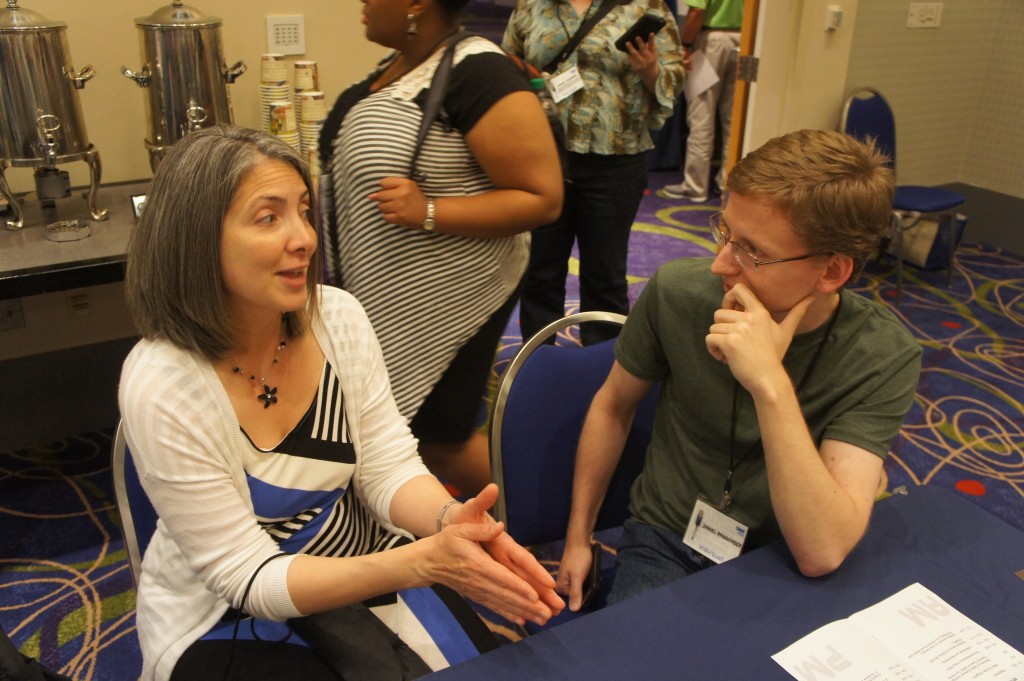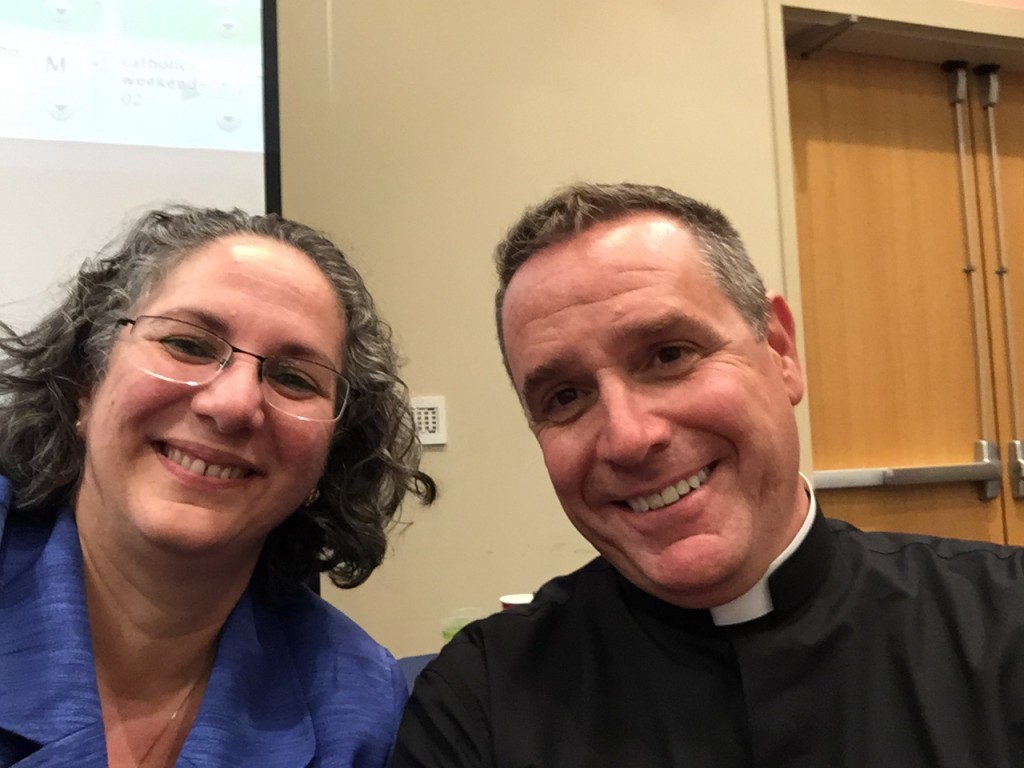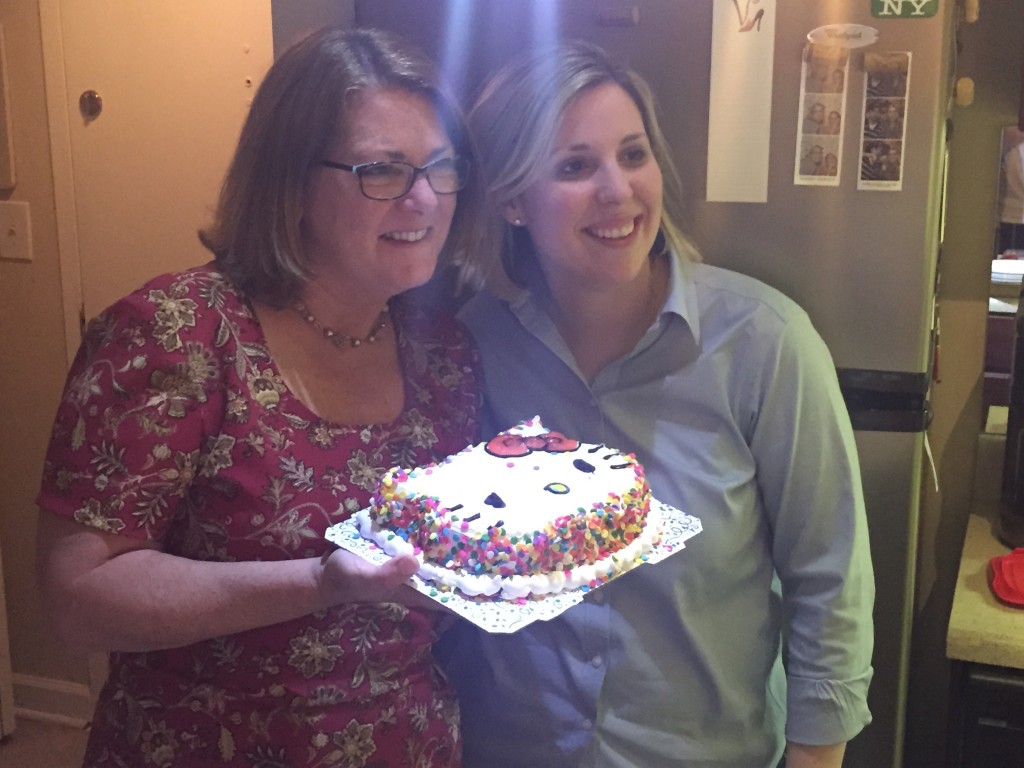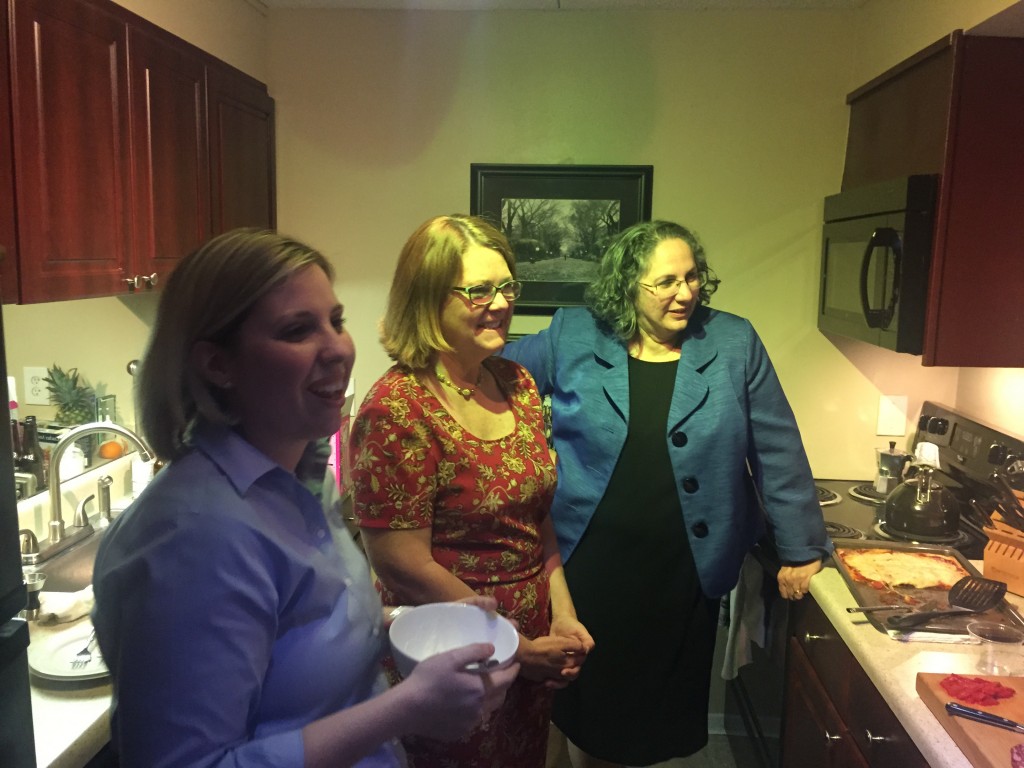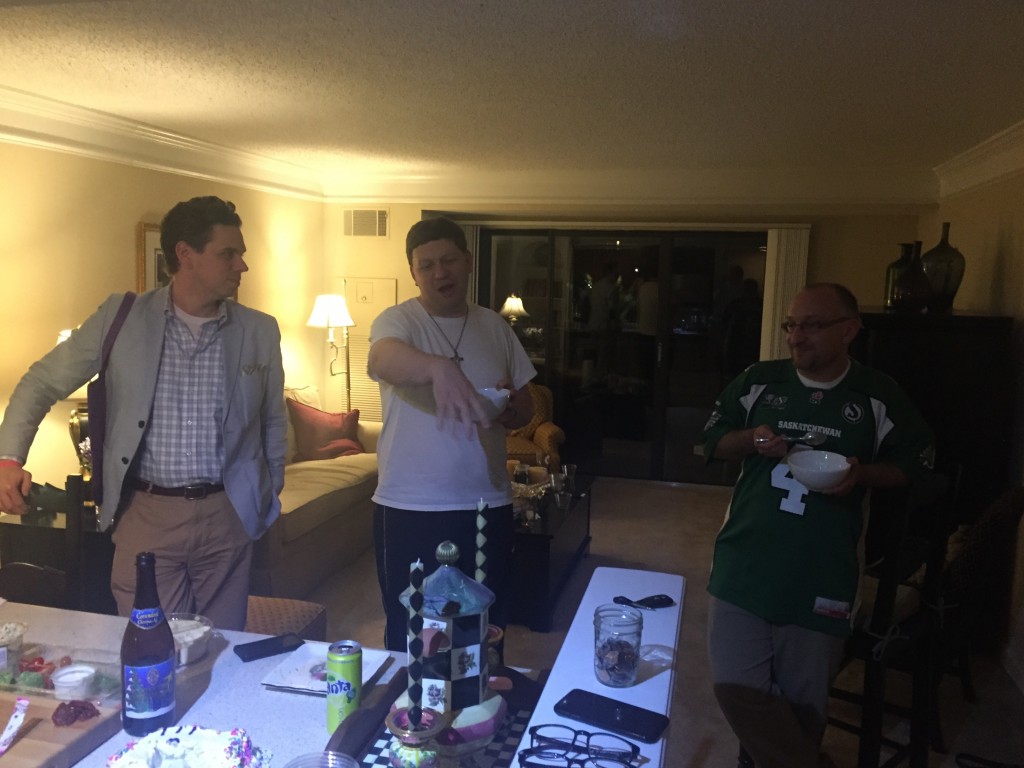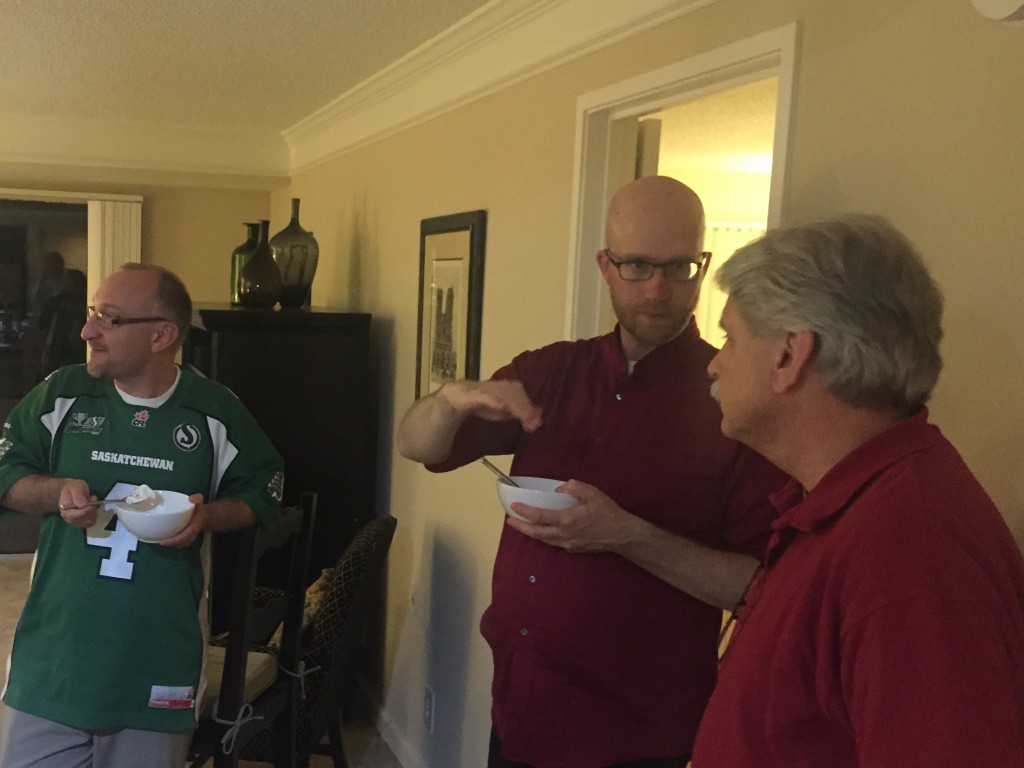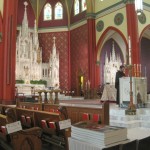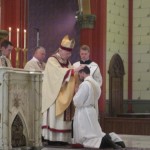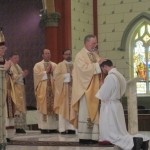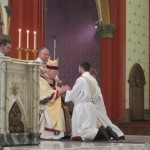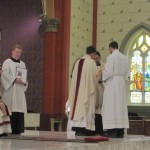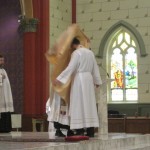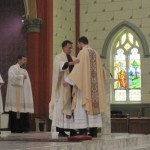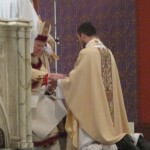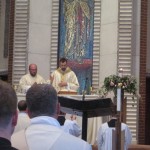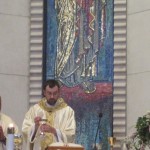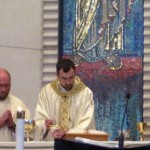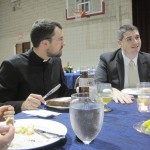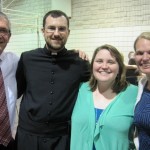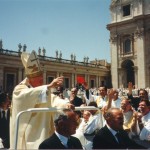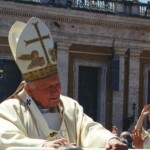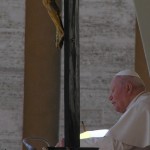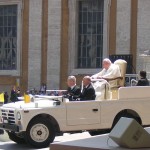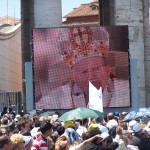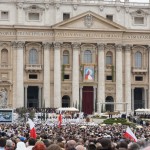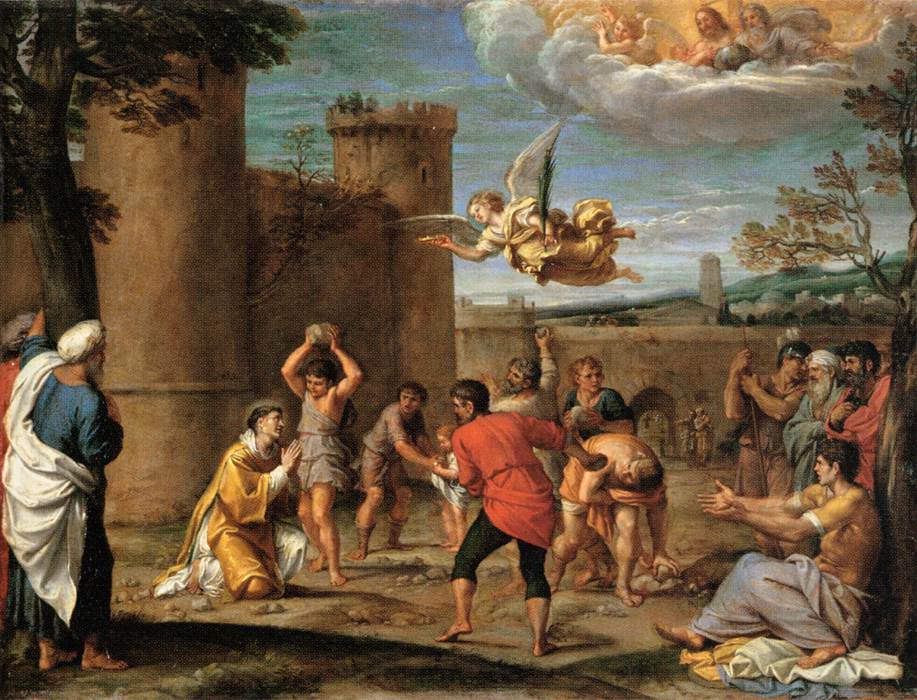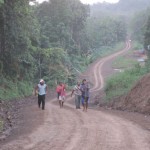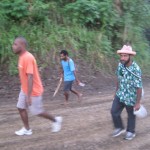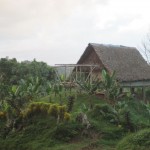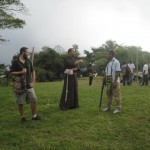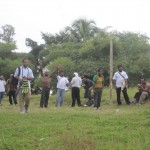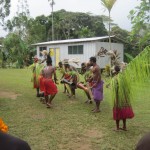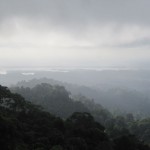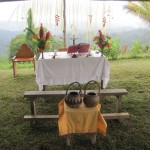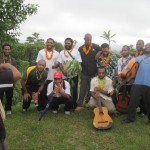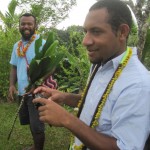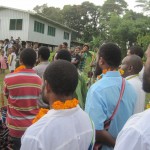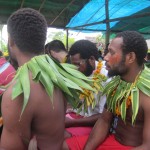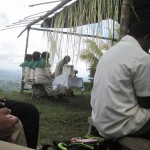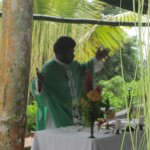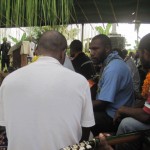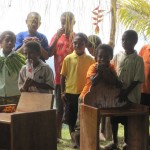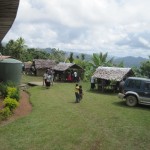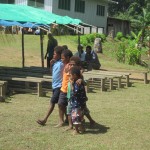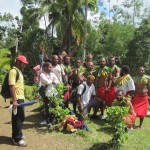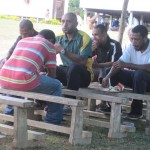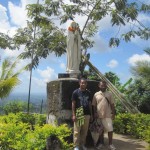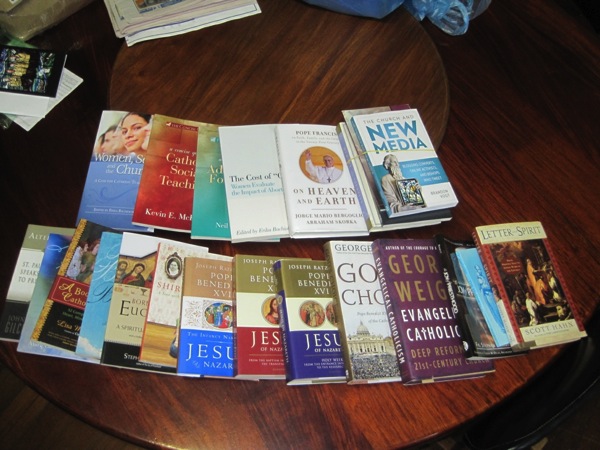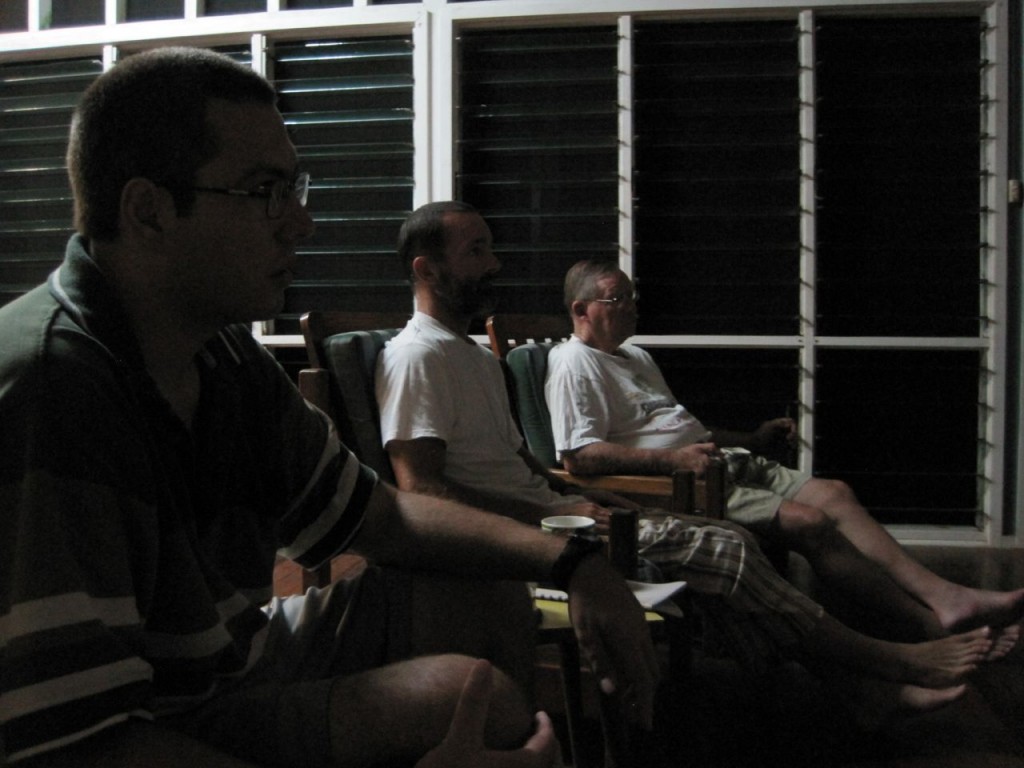If you don’t know much about Bl. Stanley Rother, I encourage you to watch this short (~20 min) documentary about his life. Continue reading
Catholicism
OKC Archdiocese releases trailer for new Father Rother documentary
The Roman Catholic Archdiocese of Oklahoma City recently released a film trailer for a new documentary about the life of the late Rev. Stanley Rother. Continue reading
Pope Francis
“A nation can be considered great when it defends liberty as Lincoln did, when it fosters a culture which enables people to ‘dream’ of full rights for all their brothers and sisters, as Martin Luther King sought to do; when it strives for justice and the cause of the oppressed, as Dorothy Day did by her tireless work, the fruit of a faith which becomes dialogue and sows peace in the contemplative style of Thomas Merton.” – Pope Francis in his address to the United States Congress
Fr. Stanley Rother and Me
- Fr. Stanley Rother
- Archbishop Beltran of Oklahoma City receiving photo of Fr. Rother
- Rother Chapel
- Lake Atitlan
- Rother Chapel
- Preparing for Good Friday procession
- Parish Staff with photo of Fr. Rother.
- Fr. Rother Shrine
- Dyeing sawdust for Holy Week
- UNO with the kids.
- Shrine to Fr. Rother
- Rother Chapel – room where Fr. Rother was martyred.
- Parish Festival
- Diego & Robert
- Clinic buried by mudslide.
- Lake Atitlan
- Mass on the 25th Anniversary of Fr. Rother’s death
- Church of St. James the Apostle
A few days ago, I learned that the Cause for Sainthood for Fr. Stanley Francis Rother took another major step forward. Continue reading
Rejuvenation at CNMC15
- One of my favorite shots! Maria & Fr. Cory
- How to improve a mediocre beer.
- Sarah Vabulas and her new book! So happy to be there for the big release!
- Lino Rulli at ATL Eucharistic Congress.
- SQPN 10th Anniversary Dinner.
- Jeff emcees the SQPN Dinner. And a fine job he did!
- Greg Willits shares memories and thoughts about SQPN’s founding and history.
- Lisa Hendey! Part of the very essence that is the CNMC.
- Greg Willits & Catholic New Media super heroes.
- I love this photo! Long distance high-5 by Maria Johnson and Sarah Vabulas
- Pat Padley! Such a smart guy and he allows me to call him my friend.
- Capt. Jeff – the wry humor works dude!
- Dee Fox! Such a blessing to have her with us.
- Always a joy to see Jennifer Willits. I think Caritas is her middle name.
- Maria Johnson with Fr. Dave Dwyer. A dangerous duo!
- Because the moment called for a Hello Kitty cake.
- Family! They care.
- A dangerous crew here! Billy Newton, Fr. Cory Sticha and Fr. Darryl Millette.
- Fr. Kyle, one of the cool kids to be sure.
A strange thing happens every time SQPN has one of its Catholic New Media Conferences: When I return home, I have symptoms of withdrawal from seeing so many people that have become like family to me. Continue reading
SQPN Podcast Marathon
Help my friends at SQPN reach their fundraising goal by joining us this Saturday, December 27 for the 2014 Podcast Marathon! Continue reading
The Grace of Yes
If you’re a regular follower of this blog, you know doubt realize that I’ve hit a snag in my posts lately. It’s a bit hard for me to put the reasons why into words, but I’ll try. Continue reading
Fr. Bryan’s Ordination
- Quite before Mass. Br. Stephen preparing to lector.
- Bishop Slattery praying over Fr. Bryan
- Fr. Bryan receiving blessings from fellow priests.
- Receiving his vestments.
- Being vested by Fr. Kerry.
- Fr. Bryan vested!
- Bishop Slattery consecrating Fr. Bryan’s hands
- Fr. Bryan’s First Mass!
- Fr. Bryan’s First Mass!
- Fr. Bryan’s First Mass!
- Fr. Bryan thanking his mother.
- Finally managed to get Fr. Bryan to sit down to dinner.
- The new Fr. Bryan with Newman Center friends.
Yesterday I had the great privilege of attending the ordination of my friend (now) Fr. Bryan Ketterer to the priesthood for the Diocese of Tulsa. Continue reading
Close Encounters with Pope John Paul II
- Pope John Paul II – 2000
- Pope John Paul II – 2000
- Pope John Paul II – 2004
- Pope John Paul II – 2004
- Pope John Paul II – 2004
- Beatification Mass – 2011
Here are a few photos from visits to Rome that I made with students from the St. Philip Neri Newman Center at the University of Tulsa.
In 2000, we were lucky to attend a special Mass for the 80th birthday of JPII. In 2004, we attended both a papal audience and the Canonization Mass for six saints, including a favorite of mine, St. Gianna Beretta Molla. Continue reading
Pope Quotes: Pope John Paul II
“Peace is a battle won when evil is defeated by good”#JPII #2popesaints #peace pic.twitter.com/1oZyNHTBJH
— 2popesaints (@2popesaints) April 21, 2014
Pope Quotes: Pope St. John XXIII
Consult not your fears but your hopes and your dreams. Think not about your frustrations, but about your unfulfilled potential.
Concern yourself not with what you tried and failed in, but with what it is still possible for you to do. – Pope John XXIII
Pope Quotes: St. John Paul II
“Do not abandon yourselves to despair. We are the Easter people and hallelujah is our song.” ― John Paul II
Pope Quotes – St. Pope John XXIII
“Consult not your fears but your hopes and your dreams."- Pope John XXIII #canonizationRR #JohnXXIII pic.twitter.com/9DvAAN9bX8
— ROME REPORTS (@romereports) April 11, 2014
“Son of God” Movie
This afternoon I had the chance to see the film “Son of God,” with my sister. From what I understand, much of the footage came from last year’s “The Bible” mini-series. While I was in Papua New Guinea, Archbishop Stephen Reichert of Madang lent us his copy of the mini-series (probably one of the few in whole country), but I was only able to watch the first two episodes before we had to return it. Therefore, I don’t know first hand if the film is just a re-edit of that footage or not. Continue reading
Feast of Saint Stephen – My Name Day
When I was younger, I never really liked my first name – Steven. It seemed ordinary to me. No pizzazz, not a name that anyone would think was cool.
I didn’t really have any other name in mind, but for awhile I thought I could go by my middle name – Craig. I didn’t know any other Craigs so, it seemed like an option, but I knew I probably couldn’t make it stick. My older sister was Christine. Growing up everyone called her Tina, but in high school she managed to make the switch to Cris, with the intriguing missing ‘h’. It only half worked though. All the family older than her still called her Tina, but her siblings and friends all called her Cris, so she was even more intriguing by being one of those dual-named people.
According to my dad, I was supposed to be called Sean. That’s what my mother wanted, but somehow my dad, who didn’t like the name, pulled a switcheroo and had Steven written on my birth certificate. So let it be written, so let it be done!
Today is December 26th, the Feast of Saint Stephen, and so I’m celebrating my Name Day. Almost like another birthday, those lucky enough to be named for a saint can celebrate their namesake’s feast day and revere him or her as a patron saint and an example for their life. It’s a very cool tradition so I love it when parents pick traditional saint names for their kids.
I’ve known for quite awhile that the day after Christmas (also called Boxing Day) is Saint Stephen’s Day, but I really never gave much thought to why he was important or why his feast day would be placed where it is. Now that I’ve learned more about our faith, I can really appreciate Saint Stephen and the very important role he had to play in the early Church.
Here (Acts 6:1) you can read how Stephen was chosen as one of the first deacons of the early Church, to assist the Apostles in their work within the community of disciples. You can also read here (Acts 6:8) how Stephen was debated by some of the people in the outer community, falsely accused and eventually brought before the Sanhedrin (the local Jewish court responsible for religious matters), accused of blasphemy.
Before the people and the court, Stephen gave a brave discourse on the history and stubbornness of the Jewish people to see and accept the presence of the Holy Spirit among them. They became so infuriated with him, that Stephen was cast out of the city and stoned to death, becoming the protomartyr, or first martyr of the Church.
During his homily today, Msgr. Gregory Gier, rector of Tulsa’s Holy Family Cathedral, made some very interesting points about why Saint Stephen, besides the fact of his martyrdom, is important to the history of the Church.
Saint Stephen, much like Christ, as he was dying, turned his soul over to the mercy of God, and prayed that his persecutors would be forgiven (Acts 7:60):
“Then he fell to his knees and cried out in a loud voice, “Lord, do not hold this sin against them”; and when he said this, he fell asleep.”
We know from Scripture, that one of persecutors of Saint Stephen was Saul, who would later be known as Saint Paul. We also know that he was present at Stephen’s stoning; and, was thus one of those whom he prayed for. Saul, was not an evil person. He was a very well educated and learned Jew. He had dedicated himself to serving God, and because of that was a zealot against anything that went against current Jewish teaching. He thought he was doing the will of God by persecuting the followers of Jesus. It took a direct intervention by God to convert him and to convince him that Jesus was the Messiah. You can read about the conversion of Saint Paul in Acts Chapter 9.
According to Msgr. Gier, it’s not wrong to attribute some of the grace from Saint Stephen’s death as a martyr, and his final prayer, to the conversion of St. Paul. The answered prayer of the Church’s first martyr is the forgiveness and conversion of Saul and the creation of the Church’s apostle to the Gentiles, St. Paul.
There’s so much to take from the story of Saint Stephen:
- The power of the Holy Spirit passed from the Apostles to Stephen by the laying on of hands when he was made a deacon.
- The example of Stephen as he served the community of disciples.
- The example of Stephen as he confronts his accusers in the Sanhedrin.
- The power of the Holy Spirit as Stephen dies, asking for his persecutors to be forgiven.
- And how that prayer is answered in the conversion of Saint Paul.
- The Church wouldn’t have had Saint Paul without the martyrdom of Saint Stephen.
What else can I say but I think it’s pretty cool to be named for Saint Stephen and I wouldn’t change it now that I understand what an honor it is.
If you get a chance to visit Rome, I urge you to visit the Basilica of St. Paul Outside the Walls. It’s the main shrine to Saint Paul and is said to be the site of his tomb. As you stand before the altar, to the left you will see a side chapel dedicated to Saint Stephen.
St. Paul Outside the Walls is one of my favorite places to visit because, with that side chapel of Saint Stephen, you are constantly reminded of the role that he played in Saint Paul’s life and how any life can be redeemed and converted by the Holy Spirit. I’ve been to that basilica three or four times and have been in all the other chapels and even the sacristy, but I’ve never been inside the chapel to Saint Stephen. Someday, I’ll go there and find it open.
I also encourage you to visit the Basilica of Saint Lawrence Outside the Walls, in Rome. There you can visit the tombs of the deacons and martyrs St. Stephen and St. Lawrence, as well as the tombs of St. Pope Hilarius and Blessed Pope Pius IX. What I love about this basilica is that they allow you to descend into the crypt where you can actually lay hands on the tombs of these great saints. It’s such a blessing!
![]() Thanks for reading all this! I hope you take some inspiration from the story of Saint Stephen.
Thanks for reading all this! I hope you take some inspiration from the story of Saint Stephen.
Saint Stephen, pray for us!
Pope Francis Scares Me
Yes, I said it. Pope Francis scares me – but in a good and challenging way.
You’ve probably seen the photo of Pope Francis embracing the man with neurofibromatosis, and you may have read some of the articles written about that truly touching moment. You may have even read some of the critical commentary that implies that this has all been overblown, over sentimentalized, over emotionalized.
Those are all good discussions.
For me, it’s all been about the internal dialogue that has been occurring inside me.
When I see some act like that of Pope Francis, I can’t help but try to put myself into the shoes of those involved.
The nameless man with the disease put himself forward to meet Pope Francis. I have no knowledge of why he did this. I don’t know what he was hoping for, but it took guts to do it. I don’t want to make any assumptions about that. It’s a bit of a stretch, but his act reminds me of the story of Zacchaeus (Luke 19:1-10) which we heard recently in Mass.
Zacchaeus was a tax collector – an outcast in his society because of it. He was “short in stature”, that is, different when compared with those around him. When Jesus was passing through Jericho, Zacchaeus wanted to see him, so he climbed a sycamore tree – essentially “going out on a limb” for a better view. Jesus, noticing Zacchaeus’ efforts to be closer to him, reaches out to him and treats him as a normal member of the community.
I see some parallels between this story in the Gospel and what Pope Francis did.
In his time, Pope Francis has constantly shown me in visible and humble ways how much higher the “love your neighbor as yourself” bar is than I usually think.
I know I shouldn’t look for affirmations about my own faith and conduct only from the people I’m around. It’s too easy to be complacent. That’s why the examples of the saints and the saintly behavior of people like Pope Francis are important to consider and reflect upon.
Why does Pope Francis scare me? Because in his simple actions, he shows me just how far off the mark I am. How much more I could do.
How much more is being expected of us. Of me.
Pope Francis makes it look so simple, but I struggle with the question: “Can I do {THAT THING} that Pope Francis just showed us?”
When I try to put myself into his shoes, would I have been able to show love to that man, or would my instinctual fear, and yes, revulsion, have won the day?
And the next time I’m faced with a chance to show true love and charity, will I be brave enough to answer the call placed before me???
+++++
I was going to leave this post like that. A hanging question in the ethereal air.
But then, providentially, this new article pops up on www.news.va as I’m editing this post and shows me what I was missing. A marvelous story, called “An act of love for Noemi” , really should be read in its entirety.
But here’s the part that got to me. Here Pope Francis is talking about a “communion of charisms”, which reminds me that the gifts I need to carry out what I’m called to do, what I will face each day, are freely given by the Holy Spirit and I needed not worry too much if I’m up to the task:
“
A second aspect of communion in holy things is the communion of charisms. The Holy Spirit distributes to the faithful a multitude of spiritual gifts and graces; the “imaginative” wealth, let us say, of gifts of the Holy Spirit is ordered to the building up the Church. The charisms — that world is a little difficult — are gifts that the Holy Spirit gives us, talents, possibilities…. Gifts given not to be hidden but to be shared with others. They are not given for the benefit of the one who receives them, but for the use of the People of God. If a charism, one of these gifts, serves instead as self-affermation [sic], then it is doubtful that we are dealing with an authentic charism or one faithfully lived out. The charisms are special graces, given to some for the good of many others. They are attitudes, inspirations and interior promptings that are born in the consciences and experiences of certain people, who are called to put themselves at the service of the community. In particular, these spiritual gifts further the sanctity of the Church and her mission. We are all called to respect them in ourselves and in others, to receive them as serving the Church’s fruitful presence and work. St Paul warns: “Do not quench the Holy Spirit” (1 Thess 5:19). Let us not quench the Spirit who gives us these gifts, these abilities, these very beautiful virtues that make the Church grow. (source: www.news.va)
“
Pope Francis also reminds me that none of us is alone. The Church as a community itself receives charisms from the Holy Spirit and if we work together, we can accomplish all those saintly acts, which we see in others, and more.
UPDATE: I recently learned about the awesome cartoons of Jason Bach. This one is just right for this post:
Hiking to Halopa – Vianney Day
- Seminarians on the road to Halopa.
- Seminarians on the road to Halopa.
- Eddie, Richard, and Solomon on the road to Halopa.
- Typical village house, on the road to Halopa.
- Nate Johnson (CapCorps), Br. Jim Mungovan, OFM Cap, and seminarian Lito Eddie, upon arrival in Halopa.
- Seminarians arriving in Halopa.
- Welcome ceremony in Halopa.
- Overlooking to the sea from the road to Halopa.
- Altar for Mass in Halopa.
- Seminarian musicians in Halopa.
- Seminarians Lito (foreground) and George (background).
- Seminarians being greeted in Halopa.
- Seminarians in traditional garb waiting for the beginning of Mass.
- Mass in Halopa
- Fr. Simon, parish priest in Halopa.
- Seminarian music group during Mass in Halopa
- Village kids in Halopa
- Village of Halopa
- Local kids in Halopa
- Seminarians in Halopa
- Lunch in Halopa
- Seminarians Lito and Frank in front of Halopa’s Marian statue.
Last Sunday, August 4th, was quite the adventure for everyone at St. Fidelis!
The village of Halopa, south of the seminary and up in the nearby mountains, joins with the seminary each year to honor the memory of St. Jean Vianney – the patron saint of priests. The village plays an important role in the life of the Archdiocese of Madang because it has the most active group of villagers who work and pray for priestly vocations.
Like the Serra Club in the US, the Immaculate Conception Parish in Halopa has a hard working group called “The Benefactors”. They meet year-round to pray for vocations and raise funds to support the seminary.
Usually on Vianney Day, villagers will come to the seminary for Mass, a celebratory meal, and some “dramas” (i.e. skits) that portray vocations and the life of St. Jean Vianney in a good light.
This year, however, it was decided that the seminarians would hike to the village along a country road, a distance of about 7 miles each direction.
We set off at 6am Sunday morning to be sure we would reach the village in time for a 9am Mass. For the students from the Highlands areas of PNG, this was no problem. Flatlanders, like me, and people from the coastal areas of PNG are not as accustomed to this type of strenuous hike, one that gains several thousand feet in elevation.
We all made it, although a few like me, hitched a ride about halfway up. I won’t lie, it was a blessing to ride the last thousand feet of elevation!
The village received us as honored guests, adorning us with flowers and greeting us in the traditional manner of their people – with a “singsing” procession of singers in traditional garb.
Mass was held in an outdoor shelter they constructed for the day, overlooking the sea coast below. The seminarians provided the music for the Mass and led the entrance, Book of the Gospel, and Offertory Processions, also dressed in a semblance of their traditional garb.
The weather was perfect, the people could not have been more welcoming, and we all joined together for a feast of pork, smoked fish, local sausages, and loads of fruits and vegetables.
The hardest part of the day actually came at the end. Hiking down the mountain to the coast and the seminary came during the hottest part of the day and there was little water to be found during the 3 hour descent.
Luckily, just in the nick of time, we passed the diocesan vocational school at Danip where we were able to fill our water bottles and down at least a liter of water each before hiking the last 2 miles to the school.
It was a great experience, a bonding time for both the students and the staff and a fine opportunity to experience village life.
The pictures attached to this post give a hint of the day. I have some video that I will post when I next have access to reliable and high speed internet.
Enjoy!
Eleven Days An Ordained Man
I just have to share this, it’s too good not to.
My friend Bryan Ketterer, a student of the St. Philip Neri Newman Center at the University of Tulsa while I was campus minster there, was recently ordained to the transitional diaconate. He’s currently studying at St. John Vianney Seminary in Denver and is expected to be ordained to the priesthood next year.
During much of his time in the seminary, now-Deacon Bryan sent out almost weekly emails to his friends with updates about his studies and what seminary life is like. Almost all of them began with a pretty cheesy limerick, but knowing Bryan you would agree they fit perfectly with his personality.
Although I missed his ordination while I was traveling back to PNG, I read with great interest all the accounts of his ordination, along with the priesthood ordination of Tulsa’s newest priest, Fr. Todd Nance.
This morning, I received the following email from Deacon Bryan and knew that I would have to share it with you. I know he won’t mind. He’s said I could post his missives before. It is wonderful to see such a joy of vocation!
Eleven days an ordained man,
This feels so right; I trust God’s plan.
I’ve much to learn,
And yet I yearn
That God complete what He began!I’m still trying to make heads and tails of this whole deacon thing, but it has been really profound as much as it has sunk in so far. I really see and think about things in a different way knowing I have been consecrated specifically for carrying out Christ’s mission on earth. It seems odd that this is the case having been a seminarian for six years and basically always thinking in this way, but it’s a significantly noticeable difference. It still feels a little foreign when I act as a deacon liturgically or give blessings, but it also just feels so right. Preaching has been a crazy experience too, knowing that in some way the Holy Spirit is moving through my gift of self in preaching and changing hearts and lives. And at this point preaching really feels like I’m just throwing myself out there and hoping the Holy Spirit’s got me covered.
It’s actually been a little hard appreciating the order I received since now I can’t stop looking ahead in excitement. Priesthood seemed so far off two weeks ago, and almost a distant hope at times, but now my heart has a little taste of what’s to come and I just can’t stop longing for it. I feel so limited in how I can serve God’s people and the world for that matter as a deacon, even though a whole new world has just been opened up to me. I think I have a beginning sense of the insane restlessness Fr. Todd Nance was going through in the few days before his priestly ordination on May 25.
I know I have more musings rumbling around in my head and heart, but I’ll save them for another day and another limerick 😉
Blessings!
-Deacon Bryan
(Photo credit: David Crenshaw – Eastern Oklahoma Catholic)
Box of Treasures
What a treat it was to receive a new Box of Treasures in the mail!
A load of new books from my good friend Pat Gohn covering a wide range of topics that will really come in handy with the students. I was really glad to see a number of books on priesthood and women’s issues.
Pat also included her own new book, “Bold, Beautiful and Bodacious.” I was hoping that she would include a copy as I’ve been wanting to read it. I’ve just finished the Introduction and since I know Pat well, can read it with her own voice in my head. A little weird, but comforting too.
My friend Brandon Vogt also included a few books in the shipment. I don’t know how that came about, but he also included his book, “The Church and New Media,” a topic near to my heart and something that the Church in PNG needs to embrace more.
The library here at St. Fidelis has some excellent material in it, but it does lack some of the more modern publications by writers such as Scott Hahn, George Weigel, Pope Benedict XVI and others. Fr. Cyril was particularly interested in seeing the second and third books in Pope Benedict’s Jesus series.
What a terrific gift to send to St. Fidelis!
Many thanks to Pat and Brandon for their contribution to the education of PNG’s budding seminarians!
Yumi Gat Papa! (Habemus Papem)
Early Thursday morning, about 4am PNG time, I hear Br. Jim’s quick steps along the friary veranda.
“White smoke! We got white smoke!”, he calls out.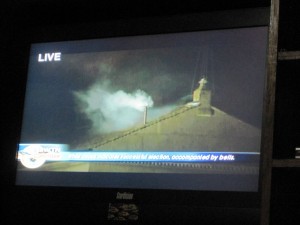
I knew that he had planned to get up at 3am to check the results of the evening votes of the conclave (Wednesday Rome time), so it wasn’t unexpected to hear some sort of report from him.
So, I jumped out of bed and made my way over to our TV room, soon joined by Nate, our other CapCorps volunteer, and Fr. Peter Meis, the Capuchin Vice Provincial who happened to be visiting St. Fidelis for a few days.
Much like the rest of the world, we watched the white smoke pouring from the Sistine Chapel and the crowd gathering in St. Peter’s Square, anxious to know who the cardinals had elected as the new pope.
When the announcement was made from the loggia of St. Peter’s Basilica, we didn’t quite hear it clearly, except for the name “Francis.” We had to wait for some more minutes until the new pope came forward.
It was thrilling to learn that a cardinal from the Americas had been chosen and someone who has had such connection to the poor of his country. The Capuchin Franciscans here were pleased and excited to know that he had chosen “Francis.”
Not more than 45 minutes after Pope Francis was introduced to Rome and the world, we joined the seminarians for their 6am Morning Prayer and Mass, and were able to inform them of the election of their new pope.
Although we didn’t have much information at that point, the students were understandably excited and cornered us after Mass, full of questions:
- Where is he from?
- What is he like?
- Is he white or black?
- Why doesn’t PNG have a cardinal?
- Wasn’t this a quick election?
- Will he visit PNG?
Later that day, I had the opportunity to show the Propaedeutic students the first episode of Fr. Robert Barron’s “Catholicism” series. If you’re familiar with that episode, “Amazed and Afraid”, there’s a scene near the end from the election of Pope Benedict XVI. It was very fortunate to be able to share that particular episode with the students and to explain that that was very similar to what had just happened in Rome with our new Pope Francis.
So like the rest of the Catholic world, we’re all learning and sharing everything we can of our new pontiff.
Just as I have very vivid memories of the last days of Blessed John Paul II and the election of Pope Benedict, I’ll always remember waiting for and watching the election of Pope Francis from our little outpost on the north coast of Papua New Guinea.
